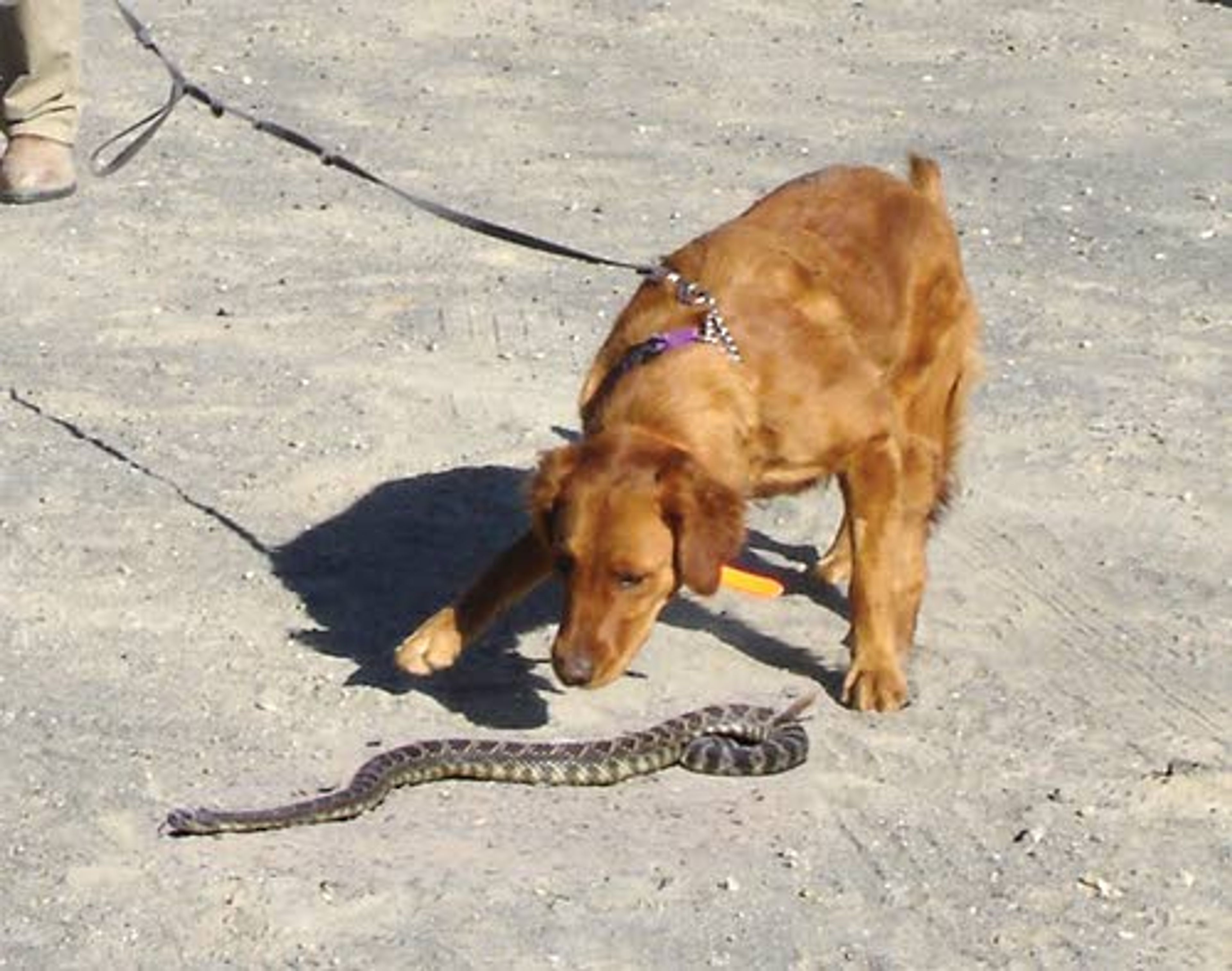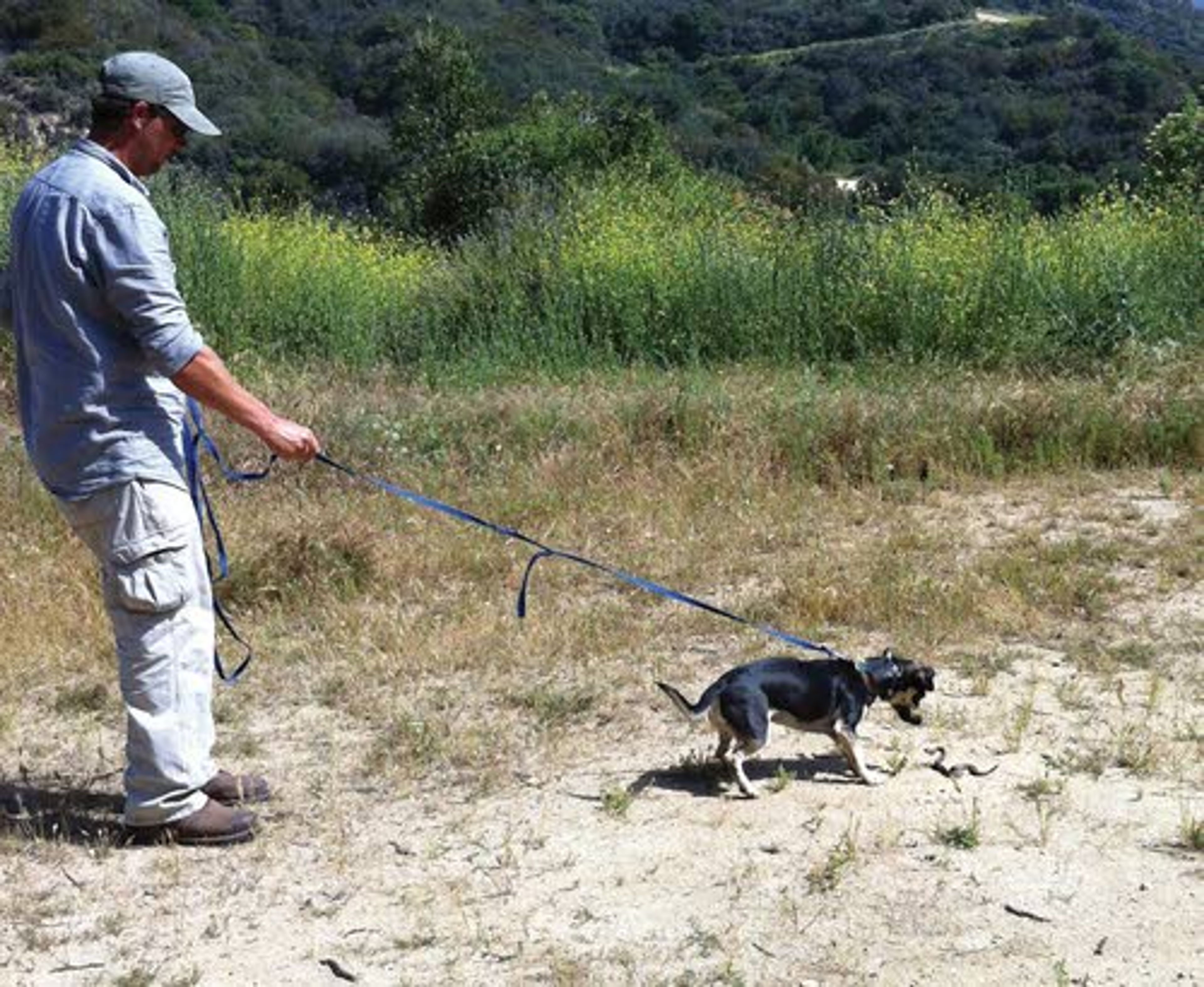Snake-aversion training for dogs can be done humanely and effectively
Snake-aversion training for dogs can be done humanely and effectively
Shelly DeAtley is tired of dealing with rattlesnakes and dogs.
"All the dogs we have had, have been bit by rattlesnakes," she said.
Last year, she lost her 5-pound poodle/chihuahua mix, Sara, to a rattlesnake bite and her Australian shepherd, Opal, previously suffered a severe swollen face following a bite.
So when she got a new dog, she was determined to find a way to keep it and other dogs safe.
She started researching rattlesnake-aversion training. Some dog owners, particularly those with hunting or herding dogs who spend a lot of time in snake habitat, do their own training. But DeAtley wanted the assistance of professionals and learned snake training isn't offered locally. The closest available training she found was in Boise. But she searched on and learned the small southern California company Natural Aversions would be in Winthrop, Wash., later this month. DeAtley was able to arrange for the company to visit Lewiston and hold a clinic here next Friday.
She was attracted to the company through its website, www.rattlesnakeaversion.com, and said she liked that it uses live rattlesnakes but also treats the snakes humanely.
"They specifically say they care about the well-being of their snakes, which I thought was important. If they care about their snakes, they are going to care about my dog," she said.
Erick Briggs, owner of the company, said the technique used to train dogs that snakes are dangerous is similar to the learning that takes place when a child learns about heat by touching a hot surface.
The basic snake aversion training strategy is to introduce dogs to snakes and then apply a short shock through a training collar so the dogs associate snakes with pain and learn to avoid them. Some trainers use bull snakes or dead rattlesnakes.
Briggs believes in using live rattlesnakes that have been muzzled and he strives to use the species of snake that are most commonly found where the dogs live. He carefully introduces dogs to rattlers in a series of different situations where they are able to see, smell or hear the snake. When they engage the snake or show interest in it, he applies a mild shock.
"The animal (snake) is incapable of biting them (the dogs) but they believe the animal did," he said.
Briggs said he believes the training is best accomplished with a low level of stimulation or shock. Some trainers use a strong shock with the idea it will make a lasting impression on the dog. But Briggs said if a high level of shock is applied, the dog often loses its ability to learn and retain information and instead reverts to a fight or flight response.
"The brain will cease working," he said. "We give dogs every opportunity to identify the animal and make their own choices."
Those interested in the training can contact DeAtley at (208) 413-3032 or shellyd181@gmail.com to reserve a spot. The cost is $70 per dog.
---
Barker may be contacted at ebarker@lmtribune.com or at (208) 848-2273. Follow him on Twitter @ezebarker.


